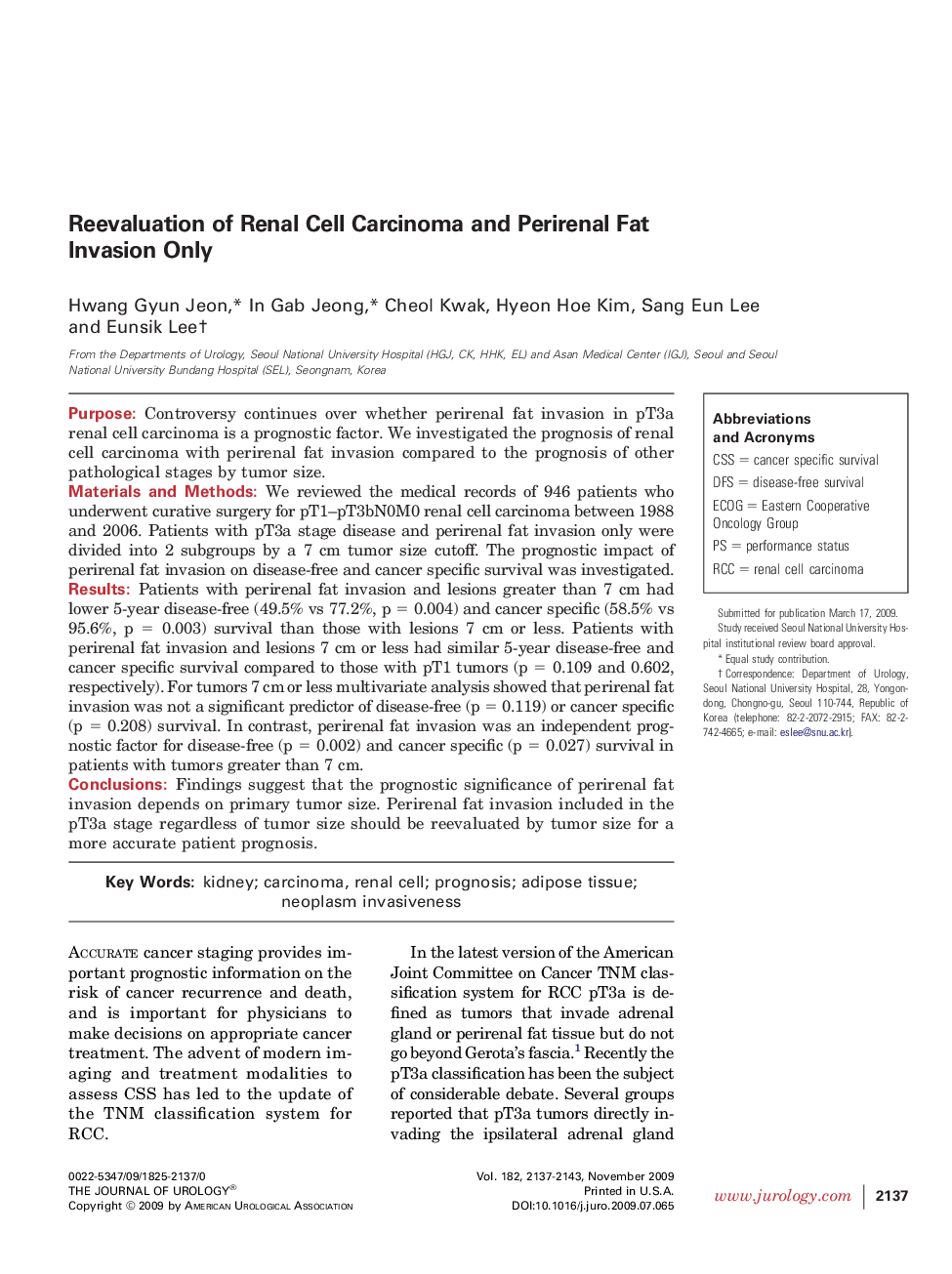| Article ID | Journal | Published Year | Pages | File Type |
|---|---|---|---|---|
| 3868278 | The Journal of Urology | 2009 | 7 Pages |
PurposeControversy continues over whether perirenal fat invasion in pT3a renal cell carcinoma is a prognostic factor. We investigated the prognosis of renal cell carcinoma with perirenal fat invasion compared to the prognosis of other pathological stages by tumor size.Materials and MethodsWe reviewed the medical records of 946 patients who underwent curative surgery for pT1–pT3bN0M0 renal cell carcinoma between 1988 and 2006. Patients with pT3a stage disease and perirenal fat invasion only were divided into 2 subgroups by a 7 cm tumor size cutoff. The prognostic impact of perirenal fat invasion on disease-free and cancer specific survival was investigated.ResultsPatients with perirenal fat invasion and lesions greater than 7 cm had lower 5-year disease-free (49.5% vs 77.2%, p = 0.004) and cancer specific (58.5% vs 95.6%, p = 0.003) survival than those with lesions 7 cm or less. Patients with perirenal fat invasion and lesions 7 cm or less had similar 5-year disease-free and cancer specific survival compared to those with pT1 tumors (p = 0.109 and 0.602, respectively). For tumors 7 cm or less multivariate analysis showed that perirenal fat invasion was not a significant predictor of disease-free (p = 0.119) or cancer specific (p = 0.208) survival. In contrast, perirenal fat invasion was an independent prognostic factor for disease-free (p = 0.002) and cancer specific (p = 0.027) survival in patients with tumors greater than 7 cm.ConclusionsFindings suggest that the prognostic significance of perirenal fat invasion depends on primary tumor size. Perirenal fat invasion included in the pT3a stage regardless of tumor size should be reevaluated by tumor size for a more accurate patient prognosis.
